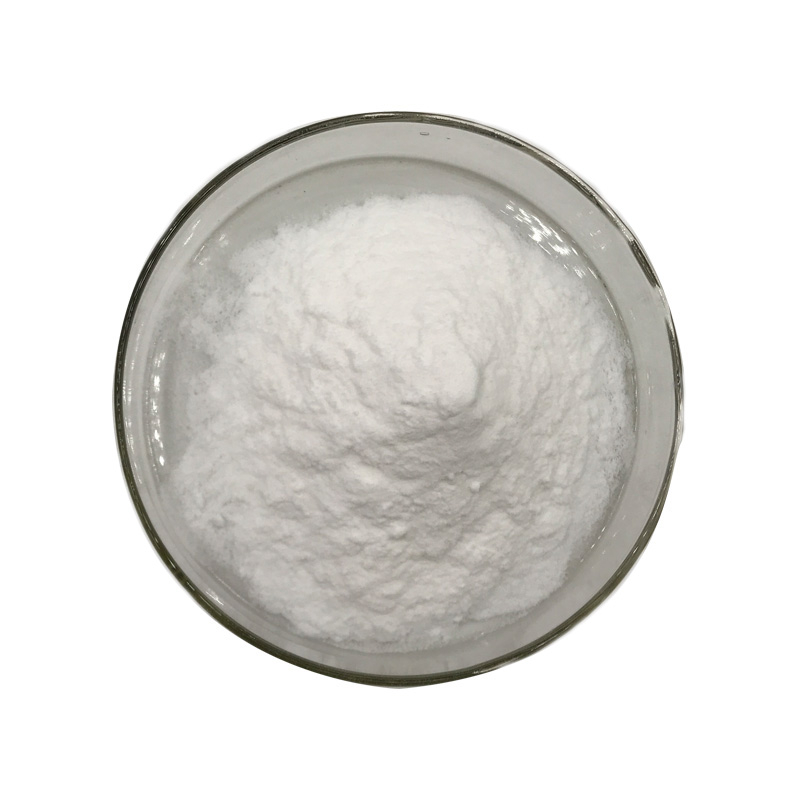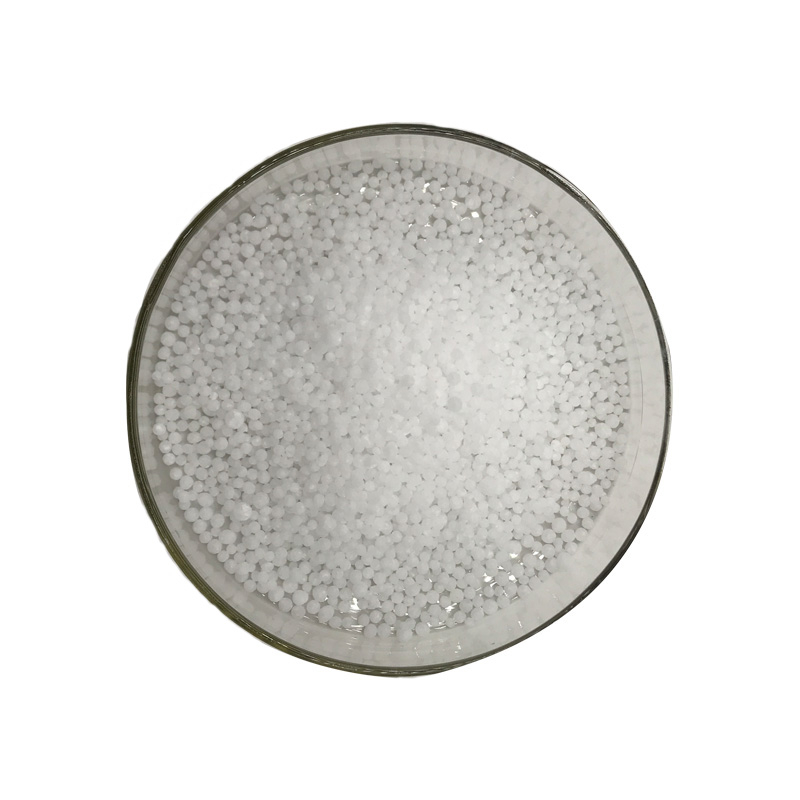Methylammonium bromide CAS#6876-37-5Methylammonium bromide Chemical PropertiesMelting point 248.0 to 253.0 °CWater Solubility Soluble in waterform powdercolor White to Almost whiteInChIInChI=1S/CH5N.BrH/c1-2;/h2H2,1H3;1HInChIKeyISWNAMNOYHCTSB-UHFFFAOYSA-NSMILES[NH3+]C.[Br-]Safety InformationHazard Codes XnRisk Statements 22-36/37/38Safety Statements 26-36/37/39-46WGK Germany 3HS Code 29239000Factory and Equipment ShowFast delivery timeInventory 2-3 working days New production 7-10 working days
Contact Now
Products Description of Benzyltributylammonium bromide CAS#25316-59-0Benzyl tributylammonium bromide is an organic substance with the chemical formula C19H34BrN, a white powder.
Contact Now
Products Description of Methyltriphenylphosphonium bromide CAS# 1779-49-3Methyltriphenylphosphonium bromide is a solid quaternary phosphonium salt flame retardant. At present, halogen-containing flame retardants are widely used organic flame retardants with excellent flame retardant properties. However, when a fire occurs, halogen-containing flame retardants will release a large amount of smoke and toxic hydrogen halide gas, causing secondary hazards.
Contact Now
Products Description of Benzyltributylammonium bromide CAS#25316-59-0Benzyl tributylammonium bromide is an organic substance with the chemical formula C19H34BrN, a white powder.
Contact Now
Products Description of Zinc bromide CAS#7699-45-8Zinc bromide is a chemical substance with the chemical formula ZnBr₂. It is a salt inorganic substance and is easily soluble in water.
Contact Now
Products Description of Cuprous bromide CAS#7787-70-4Cuprous bromide is white powder or cubic crystal, with a melting point of 498°C and a boiling point of 1345°C.
Contact Now
Products Description of Ethyltriphenylphosphonium bromide CAS#1530-32-1Ethyltriphenylphosphonium bromide is a chemical product with the molecular formula C20H20BrP.Ethyltriphenylphosphonium bromide Chemical PropertiesMelting point 203-205 °C(lit.)Boiling point 240℃[at 101 325 Pa]density 1.38[at 20℃]vapor pressure 0-0.1Pa at 20-25℃Fp 200 °Cstorage temp. Inert atmosphere,Room Temperaturesolubility 174g/l solubleform Crystalline Powdercolor White to off-whiteWater Solubility 120 g/L (23 ºC)Sensitive HygroscopicBRN 3599630I
Contact Now
Products Description of Tetrabutylammonium Bromide CAS#1643-19-2 Tetrabutylammonium bromide is a common chemical product on the market.
Contact Now
Products Description of Lithium Bromide hydrate CAS#85017-82-9Lithium bromide is a highly efficient water vapor absorbent and air humidity regulator. Lithium bromide with a concentration of 54%-55% is used as an absorption refrigerant. In organic chemistry, it is used as a hydrogen chloride remover and an organic fiber (such as wool, hair, etc.) expansion agent. In medicine, it is used as a hypnotic and sedative.
Contact Now
Products Description of Hexadecyl trimethyl ammonium bromide CAS#57-09-0Hexadecyltrimethylammonium bromide is white or light yellow crystals or powder, easily soluble in isopropanol, soluble in water, produces a lot of foam when shaken, and has good compatibility with cationic, nonionic, and amphoteric surfactants. It has excellent penetration, softening, emulsification, antistatic, biodegradability, and bactericidal properties.
Contact Now
Products Description of Hexadecyl trimethyl ammonium bromide CAS#57-09-0Hexadecyltrimethylammonium bromide is white or light yellow crystals or powder, easily soluble in isopropanol, soluble in water, produces a lot of foam when shaken, and has good compatibility with cationic, nonionic, and amphoteric surfactants. It has excellent penetration, softening, emulsification, antistatic, biodegradability, and bactericidal properties.
Contact Now
Products Description of 1-Hexadecylpyridinium bromide CAS#140-72-7Cetylpyridinium bromide is a chemical substance with the chemical formula C21H38BrN, the molecular weight is 384.4371, and the EINECS number is 205-428-3.1-Hexadecylpyridinium bromide Chemical PropertiesMelting point 63-69 °Cstorage temp. Inert atmosphere,Room Temperaturesolubility Chloroform,Methanol,Acetone,Ethanol[soluble in]solubility soluble in Chloroform,Methanol,Acetone,Ethanolform powder to crystalcolor White to Almost whiteWater Solubility 5 g/L (20 ºC)BRN 3778948InChIInChI=1
Contact Now
Products Description of Tetraethylammonium bromide CAS#71-91-0Tetraethylammonium bromide is an organic substance with the chemical formula (C2H5)4NBr, which is white crystals. It is hygroscopic. It is easily soluble in water, ethanol, chloroform and acetone, slightly soluble in benzene, and its solubility in water is 2795 g/L (25°C). The pH of a 10% aqueous solution is 6.5, and the pH remains unchanged when heated to 95°C for 28 hours. It is irritating.
Contact Now
Dodecyltrimethylammonium Bromide Chemical PropertiesMelting point 246 °C (dec.)(lit.)density 1.1566 (rough estimate)vapor pressure 0Pa at 20℃refractive index 1.5260 (estimate)Fp 246°Cstorage temp. Store below +30°C.solubility H2O: 0.1 M at 20 °C, clear, colorlessform Powdercolor White to slightly yellowWater Solubility solubleSensitive Hygroscopicλmaxλ: 240 nm Amax: ≤0.2λ: 250 nm Amax: ≤0.03λ: 260 nm Amax: ≤0.02λ: 500 nm Amax: ≤0.02BRN 3597463InChIKeyXJWSAJYUBXQQDR-UHFFFAOYSA-MCAS DataBase Reference1119-94-4(
Contact Now
Products Description of Boron tribromide CAS#10294-33-4Boron tribromide is an inorganic compound, a colorless liquid at room temperature, which reacts with moisture in the air to produce smoke and boric acid and hydrogen bromide.
Contact Now
Products Description of Tetrabutylammonium bromideCAS#1643-19-2Tetrabutylammonium bromide is a common chemical product on the market.
Contact Now
Products Description of Cetrimide CAS#8044-71-1Cetrimonium bromide is in the form of white or light yellow crystals or powder, easily soluble in isopropyl alcohol and water, produces a large amount of foam when shaken, has good compatibility with cationic, nonionic and amphoteric surfactants, and has excellent penetration, softening, emulsification, antistatic, biodegradability and bactericidal properties.Cetrimide Chemical PropertiesMelting point 245-250 °C(lit.)solubility H2O: 10 % (w/v)CAS DataBase Reference8044-71-1(CAS DataBase Reference)Safety InformationHazard C
Contact Now
Products Description of Cetrimide CAS#8044-71-1Cetrimonium bromide is in the form of white or light yellow crystals or powder, easily soluble in isopropyl alcohol and water, produces a large amount of foam when shaken, has good compatibility with cationic, nonionic and amphoteric surfactants, and has excellent penetration, softening, emulsification, antistatic, biodegradability and bactericidal properties.Ctrimide Chemical PropertiesMelting point 245-250 °C(lit.)solubility H2O: 10 % (w/v)CAS DataBase Reference8044-71-1(CAS DataBase Reference)Safety InformationHazard Co
Contact Now
Products Description of Tetraethylammonium bromideCAS#71-91-0Tetraethylammonium bromide is an organic substance with the chemical formula (C2H5)4NBr, which is white crystals. It is hygroscopic. It is easily soluble in water, ethanol, chloroform and acetone, slightly soluble in benzene, and its solubility in water is 2795 g/L (25°C). The pH of a 10% aqueous solution is 6.5, and the pH remains unchanged when heated to 95°C for 28 hours. It is irritating.
Contact Now
Products Description of LANTHANUM ACETATECAS#917-70-4White powderLANTHANUM ACETATE Chemical Propertiesdensity 2.02[at 20℃]Water Solubility 100g/L at 20℃CAS DataBase Reference917-70-4(CAS DataBase Reference)EPA Substance Registry SystemLanthanum acetate (917-70-4)Factory and Equipment ShowFast delivery timeInventory 2-3 working days New production 7-10 working days
Contact Now
Products Description of Triallylamine CAS#102-70-5Triallylamine is an organic compound with the chemical formula C9H15N. It is mainly used as an extraction agent for uranium and rare metals. It can also be used to treat organic wastewater and produce petroleum products and quaternary ammonium compounds and their derivatives as additives and metal resists.
Contact Now
Products Description of Urea CAS#57-13-6When the temperature is below 20℃ and the relative humidity is below 70%, urea not only does not absorb moisture, but also evaporates water to reduce its water content; when the temperature exceeds 20℃ and the relative humidity is higher than 80%, it begins to absorb moisture, and in severe cases, it becomes a paste. When the air turns dry again, it will re-agglomerate, and its degree is second only to ammonium nitrate.
Contact Now
Products Description of (±)-Cloprostenol sodium salt CAS#55028-72-3(5Z)-rel-Cloprostenol Sodium Salt is the d-enantiomer of Cloprostenol, an aryl-oxymethyl analog of prostaglandin F2α.(±)-Cloprostenol sodium salt Chemical PropertiesMelting point 68-70 °Cstorage temp. Inert atmosphere,Store in freezer, under -20°Csolubility H2O: >10 mg/mLform solidcolor light brownInChIKeyIFEJLMHZNQJGQU-KXXGZHCCSA-MCAS DataBase Reference55028-72-3(CAS DataBase Reference)Safety InformationHazard Codes TRisk Statements 60-22-36/37/38Safety Statements 53-26
Contact Now
Products Description of Benzyltriethylammonium chloride CAS#56-37-1Benzyltriethylammonium chloride is a quaternary ammonium salt, also known as quaternary ammonium salt, which has similar properties to inorganic salts, is easily soluble in water, and its aqueous solution can conduct electricity.
Contact Now
































